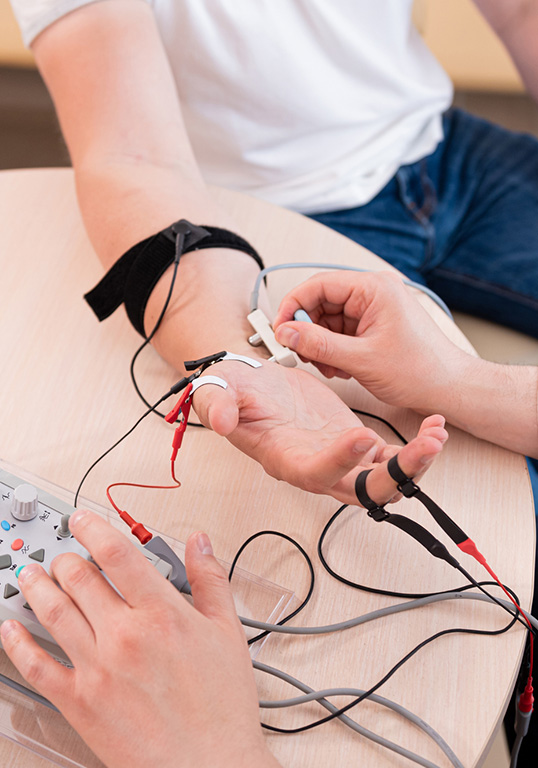
A Nerve Conduction Study measures how quickly electrical impulses travel through the peripheral nerves. The procedure involves stimulating a nerve with a small electrical impulse and recording the response from the muscles or sensory nerves. The speed and strength of these impulses can indicate whether a nerve is functioning properly or if there is damage or disease affecting it.
NCS is often performed in conjunction with Electromyography (EMG), which measures the electrical activity of muscles. Together, these tests provide a comprehensive assessment of nerve and muscle function.
The Nerve Conduction Study is a relatively straightforward and minimally invasive procedure, typically taking 30-to-60 minutes, depending on the number of nerves being tested. The steps involved are as follows.
Nerve Conduction Studies are used to diagnose and evaluate a wide range of conditions that affect the peripheral nervous system. Some of the primary conditions include:
Overview:
Symptoms:
Treatment Options:
Overview:
Symptoms:
Treatment Options:
Symptoms:
Treatment Options:
Overview:
Symptoms:
Treatment Options:
Overview:
Symptoms:
Treatment Options:



Fee Increase
Please note that from the 1st of December 2025, our follow up appointment fee has increased by $25. All other fees remain the same.
Rooms Closed
Our rooms are closed from the 18th of December to the 5th of January for holidays.